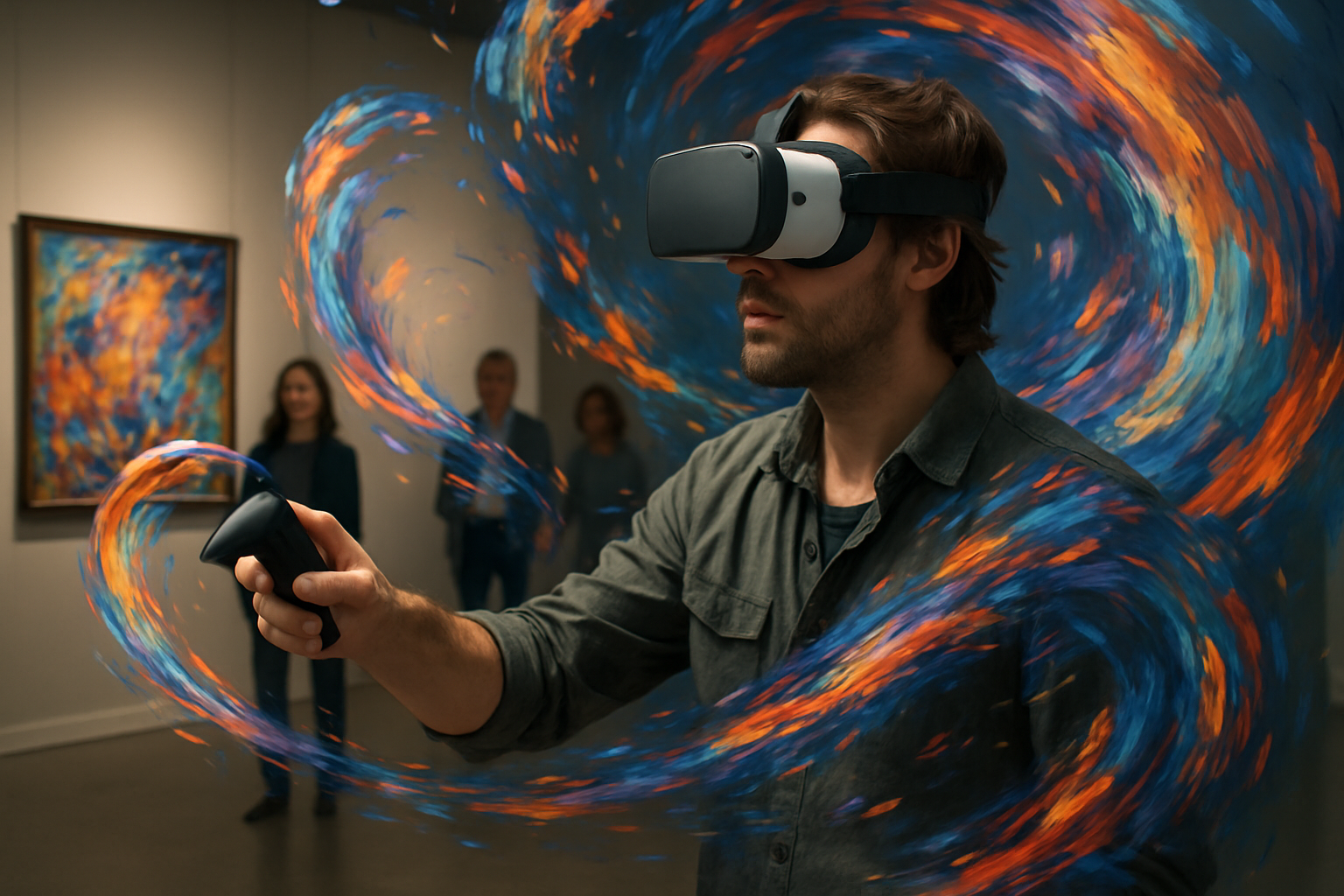Behind the Canvas: The Silent Evolution of Contemporary Museum Curation
In an era defined by digital accessibility and shifting cultural landscapes, museum curatorship has undergone profound transformations. Traditional white-wall gallery spaces are giving way to innovative curatorial approaches that challenge conventional wisdom about art presentation. This quiet revolution extends beyond mere aesthetic choices, encompassing audience engagement strategies, technological integration, and institutional philosophy. Modern curators increasingly view themselves as storytellers and cultural mediators rather than simply art arrangers. The profession now demands expertise in digital platforms, immersive experiences, and inclusive narratives that speak to diverse audiences across generational and cultural divides.

The Changing Face of Museum Philosophy
The traditional museum model—rooted in Enlightenment ideals of collecting, preserving, and displaying artifacts in controlled environments—has faced growing scrutiny over the past decades. Contemporary curators are reimagining the very purpose of museums: from temples of knowledge to forums for conversation and community engagement. This philosophical shift manifests in exhibition designs that encourage visitor participation rather than passive observation. Museums like the Pérez Art Museum Miami and the Palais de Tokyo in Paris have pioneered approaches where exhibition spaces become social hubs, blending art appreciation with community gathering spaces, educational workshops, and interactive experiences.
The curatorial practice has expanded beyond object selection to creating multisensory environments that contextualize works within broader cultural narratives. This represents a significant departure from traditional museology that emphasized art objects in isolation, presented with minimal contextual information. Modern curators increasingly view themselves as cultural translators, helping diverse audiences find personal connections to artistic expressions across time and cultural boundaries. This democratizing approach has led to more inclusive exhibition planning that considers multiple perspectives and entry points for engagement.
Technology’s Transformative Impact
Digital technologies have fundamentally altered how curators conceive, design, and present exhibitions. Virtual reality installations, interactive touchscreens, and mobile applications now complement traditional display methods, creating layered experiences that appeal to technology-native generations. The Cleveland Museum of Art’s ArtLens Gallery exemplifies this approach with its interactive wall that allows visitors to explore the collection through gesture-based technology. Similarly, the Cooper Hewitt Smithsonian Design Museum provides interactive pens that enable visitors to collect and manipulate digital versions of exhibited objects.
Behind the scenes, technological advances have revolutionized collection management and conservation practices. Digital cataloging systems, high-resolution imaging, and climate monitoring technologies provide curators with unprecedented tools to preserve and study artifacts. Advanced visualization techniques like multispectral imaging reveal hidden aspects of artworks, informing curatorial decisions and enriching exhibition narratives. These technological capabilities have expanded curatorial possibilities, enabling more complex thematic exhibitions that draw connections across time periods and artistic movements.
Decolonizing the Museum Space
Perhaps the most significant shift in contemporary curation involves addressing museums’ colonial legacies and working toward more equitable representation. Institutions worldwide are reconsidering their collections and exhibition practices through decolonial perspectives, acknowledging the problematic acquisition histories of many artifacts and the absence of marginalized voices. Museums like the Smithsonian National Museum of African American History and Culture have pioneered approaches that center previously overlooked narratives and collaborate with source communities.
This movement extends beyond collection diversification to fundamentally questioning who has authority to interpret cultural heritage. Progressive institutions now involve community consultants and cultural stakeholders in curatorial decisions, embracing collaborative models that distribute curatorial authority. The Amsterdam Museum’s “New Narratives” program exemplifies this approach by inviting community members to reinterpret historical collections, creating alternative exhibition narratives that challenge established historical accounts. These efforts represent a significant departure from traditional curatorial practices that privileged academic expertise over community knowledge.
Economic Pressures and Institutional Change
Financial realities have significantly reshaped curatorial priorities in recent years. With public funding decreases for cultural institutions in many countries, museums face mounting pressure to generate revenue through exhibitions that attract broad audiences. This economic reality has influenced exhibition planning, with blockbuster shows featuring recognizable artists often taking precedence over more experimental or challenging presentations. The tension between artistic integrity and financial sustainability represents one of the central challenges for contemporary curators.
Simultaneously, alternative funding models are emerging that support more innovative curatorial approaches. Crowd-funding platforms, corporate partnerships with fewer restrictions, and collaborative inter-museum exhibitions provide potential pathways for sustaining curatorial experimentation. Forward-thinking institutions have developed mixed models that balance popular programming with more challenging exhibitions, using revenue from the former to support the latter. This economic balancing act requires curators to develop business acumen alongside their artistic expertise, fundamentally changing professional expectations within the field.
Audience Engagement in the Digital Age
As attention spans shorten and entertainment options multiply, museums compete within an increasingly crowded attention economy. Progressive curators have responded by developing exhibition strategies that acknowledge contemporary viewing habits while still encouraging deep engagement. This includes incorporating narrative elements, creating Instagram-worthy installation moments, and developing complementary digital content that extends the exhibition experience beyond physical visits.
Museum attendance demographics reveal both challenges and opportunities: while younger visitors increasingly seek participatory experiences, museums must also serve traditional audiences who prefer contemplative engagement with artworks. Successful contemporary curation navigates these competing expectations by creating layered experiences that offer multiple entry points. The Rijksmuseum’s innovative digital strategy exemplifies this approach, combining traditional gallery presentations with extensive online resources, social media engagement, and a pioneering open-access policy for their digital collection.
The curatorial field continues this evolution amid broader cultural shifts toward more democratic and inclusive cultural institutions. As museums reconsider their societal roles, curators increasingly serve as cultural mediators rather than authoritative voices, facilitating conversations between artworks, artists, and diverse publics. This transformation, while challenging established practices, ultimately strengthens museums’ cultural relevance by making them more responsive to contemporary concerns and more accessible to diverse audiences.





